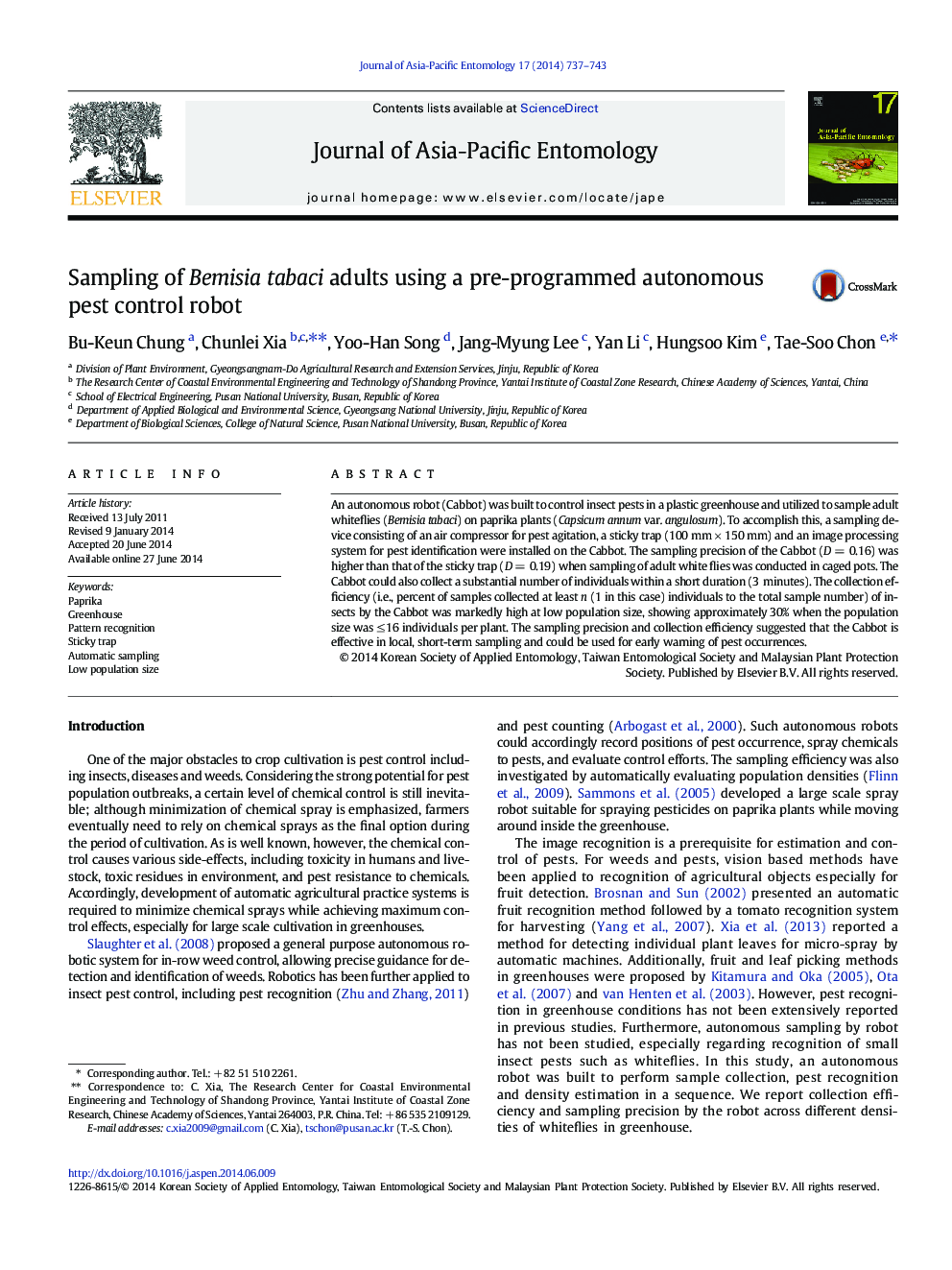| Article ID | Journal | Published Year | Pages | File Type |
|---|---|---|---|---|
| 4524545 | Journal of Asia-Pacific Entomology | 2014 | 7 Pages |
•An autonomous robot (Cabbot) was built to sample adult whiteflies (Bemisia tabaci) on paprika plants (Capsicum annuum L).•The Cabbot could sample a substantial number of individuals for within a short time (i.e., 3 minutes).•Collection of insects by the Cabbot was remarkable when there was a low population size.•The sampling efficiency at low densities suggested that the robot could be used for early warning of pest occurrences.•The sampling precision of the Cabbot (D = 0.16) was higher than that of the sticky trap (D = 0.19).
An autonomous robot (Cabbot) was built to control insect pests in a plastic greenhouse and utilized to sample adult whiteflies (Bemisia tabaci) on paprika plants (Capsicum annum var. angulosum). To accomplish this, a sampling device consisting of an air compressor for pest agitation, a sticky trap (100 mm × 150 mm) and an image processing system for pest identification were installed on the Cabbot. The sampling precision of the Cabbot (D = 0.16) was higher than that of the sticky trap (D = 0.19) when sampling of adult white flies was conducted in caged pots. The Cabbot could also collect a substantial number of individuals within a short duration (3 minutes). The collection efficiency (i.e., percent of samples collected at least n (1 in this case) individuals to the total sample number) of insects by the Cabbot was markedly high at low population size, showing approximately 30% when the population size was ≤ 16 individuals per plant. The sampling precision and collection efficiency suggested that the Cabbot is effective in local, short-term sampling and could be used for early warning of pest occurrences.
Graphical abstractFigure optionsDownload full-size imageDownload as PowerPoint slide
